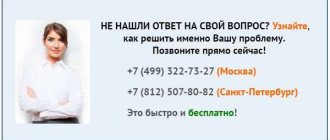What is a lump sum benefit upon retirement?
Every employee retiring has the right to a pension. The amount of this security is often insufficient for a comfortable existence. Therefore, the state assumes this obligation to provide one-time payments to those retiring for a well-deserved retirement, as an addition to the basic income from the amount of pension contributions.
A lump sum payment upon retirement is an opportunity to receive part of your labor pension throughout your life. You can receive it not only as a monthly payment, but also as a one-time payment (subject to certain conditions). You can also receive an immediate payment through additional deposits. Its amount depends on the savings funds in their pension account at the time of assignment of labor support. For those born before 1967, savings were formed over three years (2002-2004) and the amounts will range from 5,000 to 15,000 rubles.
Legal regulation
If a special law does not provide for certain payments upon retirement, then internal local documents approved by the employer and having legal force only if conditions are improved compared to federal ones are fundamental.
Internal documents
How much salary is paid upon retirement by age or a fixed amount of money is important to establish in the collective agreement and in the regulations on remuneration. If this information is missing, then the administration has every right not to make additional payments other than those regulated by the Labor Code.
In general, upon dismissal according to the Labor Code, the following is paid:
- Basic and additional wages for the period worked. This is payment in accordance with the official salary and tariff rates, allowances and bonuses for production performance in proportion to the time worked. Quarterly bonuses and additional payments based on the results of work for the year can be made additionally upon completion of the reporting period and the formation of financial indicators.
- Compensation for unused vacation, regardless of the periods when the employee did not take advantage of the vacation right. Not a single day is lost or burned during dismissal. Alternatively, the pensioner can go on vacation immediately before being released from work.
- Severance pay upon retirement in the event of staff reduction, liquidation of an organization or according to the rules provided for by a collective agreement, legislation or written agreement with the employee.
The final payment to the employee in accordance with Article 140 of the Labor Code is made on the last working day of work according to the schedule, in the event of the employee’s absence from the workplace for valid reasons no later than the next day.
When formulated at one’s own request, the phrase “in connection with retirement” indicated in the application exempts from two-week work, and by agreement of the parties obliges the employer to accrue severance pay in the event of documented obligations. If a pensioner or pre-retirement employee quits due to liquidation or staff reduction, then he is credited with money based on the reduction, and pre-retirement workers receive unemployment benefits from the employment fund in the amount of the subsistence level for a year.
A pensioner’s forced “own desire” to resign is punishable and can be appealed in court with an obligation to compensate for forced downtime and moral damage.
Pension reform
The increase in pensions due to a decrease in the number of pensioners will be carried out gradually from 01/01/2019. Indexation has been calculated since January 2020 by the Russian Pension Fund.
According to Law No. 350-FZ of October 3, 2018, when retiring into old age pension, the following conditions must be met simultaneously:
- a gradual increase in the retirement age to 60 years for women, 65 for men, which will reach the threshold in 2023;
- a gradual increase in the total insurance period to 15 years until 2024;
- smooth growth of the IPC indicator to 30 units in 2025.
Raising the retirement age by 5 years will affect teachers and medical workers applying for a long-service pension, residents of the Far North and similar regions who have the right to early retirement due to unfavorable climatic conditions. Applicants for a social pension - persons who are not entitled to a pension due to a lack of pension experience or points, will be able to receive a pension taking into account a gradual increase in age.
However, the enacted law did not make any changes to the mandatory additional payments upon retirement in old age, only tightening the liability for unauthorized dismissal for employers. Previously, the fact of dismissal at the initiative of the administration only on the basis of reaching retirement age was considered discrimination; from January 1, 2019, the norm will apply to pre-retirees - persons who will be registered for vacation in accordance with the innovations in the age limit.
What benefits are everyone entitled to upon retirement?
It is important to note that in connection with the new Federal Law of October 3, 2018 No. 350-FZ, which involves a gradual increase in the retirement age, and not a sharp jump of 5 years, from 60 to 65 for men and from 55 to 60 for women. The age will increase annually by 1 year. But thanks to the amendment dated August 29, 2018, in 2020 the required age will increase by only six months - to 60.5 and 55.5 years for men and women, respectively. Other parameters necessary for applying for an old-age pension, such as length of service and pension points, will also change. We will indicate them below in our article.
Retirement is a complete cessation of work. If the person continues to work, this will be an additional source of income. Taking a well-deserved retirement finally means that a person will live exclusively on the social benefits that he has earned. After submitting an application for payment, the employee has the right to count on certain types of additional payments that are guaranteed by the state.
So, the retirement benefits that every employee can count on under certain conditions:
- lump sum payment to pensioners upon retirement;
- urgent;
- cumulative;
- social.
Let's look at it in a little more detail. We talked about the lump sum payment above, let's talk about the three remaining ones.
What payments are due?
A retiring retiree is entitled to the same benefits as any other employee in a similar situation. In addition to salary, a citizen who decides to retire has the right to expect to receive compensation for unused vacation. If the company's management dismisses an employee due to staff reduction, he is entitled to severance pay, the amount of which must correspond to his average monthly salary.
In accordance with the current legislation of the Russian Federation, a citizen who decides to retire has the right to claim:
- salary for the current pay period;
- payment for unused vacation;
- compensation 13 bonuses - paid by those institutions whose employment contracts provide for material incentives for employees at the end of the year;
- severance pay.
Salary for the current pay period
The final payment upon termination of the employment relationship with a pensioner must be made within a strictly established time frame in accordance with the legislation of the Russian Federation. As a rule, it is carried out on the last day of work. If the worker was not present at his place on the date of dismissal, but his position was retained, payments upon retirement by age must be made no later than the day following the request for final payment indicated by this citizen.
Scheme of monthly income payments upon dismissal:
| Balance of unpaid wages | Days worked per month. Salary x Total number of days per month. | Prices x Products manufactured in the last month. | Bonus approved for payment by the manager |
Russian employers use unified form No. 61 to document the calculation of salary and other compensation upon dismissal. After deducting all due payments, the calculation of wages upon retirement will be calculated according to the following formula: Z (OST) = OKL / RD x OD - D, where:
- OKL – monthly salary of the worker;
- RD – the number of working days in the month for which the salary balance is calculated;
- D – debts of the employee to the employer;
- Z (OST) – salary (balance);
- OD – the number of unpaid days worked (including the day of dismissal).
Cash compensation for unused vacation
If a retiring pensioner has unused vacation days left, they are calculated using the following formula: BUT = GG x 28 + 28/12 x M – O, where:
- BUT – compensation for unused vacation;
- GG – the number of complete years worked in the organization;
- M – the number of months in partial years of work in the company;
- O – the number of compensated vacation days at the time of dismissal.
If a pensioner has worked at the enterprise for a full 11 months from the date of registration of the employment contract, it is considered that he has worked for a full year. If the length of service does not exceed an eleven-month period, a simplified formula is used to calculate the number of vacation days: BUT = 28/12 x M - O. If the resigning pensioner worked in the organization from 5.5 to a full 11 months, and the termination of the employment contract is due to:
- liquidation of the company;
- reduction of staff;
- temporary suspension of work or reorganization;
- conscription of an employee for military service;
- professional incompetence;
the BUT indicator will be calculated using the formula: BUT = 28 – O.
Compensation for unused vacation will be calculated using the following formula: VNO = NO x SZ, where:
- VNO - payment of compensation for unused vacation;
- SZ – average daily salary;
- BUT – unused vacation.
Average daily earnings are calculated using the formula SZ = V/OD, where V are all payments that are taken into account in the billing period (1 year or less, starting from the date of conclusion of the employment contract until the day of leave or dismissal), and OD is the number of hours worked. days. To obtain the OD indicator, the following formula is used: OD = M x 29.3 + ODNM / KDNM x 29.3, where:
- M – number of full months worked;
- ODNM – the number of days of labor activity in partial months of the billing period;
- KDNM – the number of calendar days in partial months. work.
13th prize
Payment of 13 salaries after dismissal is a separate procedure. Only the employee whose work contract contains a bonus clause has the right to apply for this type of compensation. The presence of a contractual condition is relevant if:
- the results of labor activity were satisfactory, and during the billing period the company made a profit;
- According to the contract, a pensioner who resigns at his own request does not lose the right to receive a bonus.
In exceptional cases, claims for financial incentives in the form of 13 salaries are not satisfied, for example, when workers are laid off due to unprofitable production. The right to bonuses, as a rule, is stipulated by a number of documents - any of them gives the worker the opportunity to claim this type of compensation:
- collective contract;
- wage regulations;
- bonus act;
- personal employment contract.
The bonus is paid immediately before retirement along with other compensation. If the employer provides quarterly and/or annual financial incentives, the legislation of the Russian Federation obliges the employer to pay even those employees who quit earlier, since they were related to the organization’s profit for the specified time period.
- How to determine the gender of the unborn child
- Knitted manicure - photo. How to make a sweater design on nails with gel polish step by step at home
- Vasculitis - what is this disease and how to treat it
The bonus amount is calculated according to the following rules (for the specified period):
- the total percentage of incentives is calculated;
- the employee’s total income is calculated;
- if the billing period (quarter or year) was not fully worked out, only the number of full months is taken into account;
- the percentage of payments should be multiplied by the worker’s current income - this is how the amount of incentives is obtained;
- from the bonus received, 13% personal income tax (hereinafter referred to as personal income tax) is deducted and paid to the federal budget.
Urgent
This is a monthly cash payment for a period specified by the insured person, which cannot be less than 10 years.
People who have accumulated savings with the help of additional insurance contributions for funded provision, as well as employer contributions or contributions for co-financing the formation of pension savings or income from their investment, funds or part of the funds of maternal and family capital aimed at the formation of a funded pension are entitled to receive it. income from their investment, when the right to establish an old-age insurance pension arises (including early).
Who is entitled to a one-time payment of a funded pension?
From the above it is clear that persons who receive social pensions but have not acquired the right to a labor pension have the right to a one-time payment. And persons who have “earned” a labor pension (including in case of early retirement - according to length of service: teachers; doctors, etc., social groups provided for by law who continue to work), but the amount of monthly pension savings is 5% or less in relation to the total amount of their labor pension (its insurance part). We have decided who is entitled to a lump sum payment, let’s move on.
Where can I receive a lump sum payment from the funded part of my pension?
If you belong to one of the two categories of citizens above, you automatically receive the right to receive a one-time NPP payment. To register and pay it, you need to know exactly where your funded pension was formed.
If all your contributions went to the Pension Fund and the NPP was distributed to the VEB State Management Company (if you did not transfer your savings to the NPF), then you will have to apply to the Pension Fund for a one-time payment.
If the formation and investment of your funded pension took place through any non-state pension fund, then to receive a lump sum payment, contact your NPF.
If you are not sure where your savings were, you can apply for this information to the branch of the Pension Fund of the Russian Federation or obtain an extract on the status of your individual personal account at the Pension Fund of the Russian Federation (it is also possible to obtain this information on the government services portal).
If a lump sum payment is assigned through the Pension Fund, it will be made together with the labor pension. Payments through non-state pension funds are made upon the personal application of the client or his legal representatives and are paid to the provided bank account.
Cumulative
This is a monthly cash benefit. In order to receive old-age savings benefits, 3 conditions must be met simultaneously, namely:
- reaching retirement age;
- sufficient insurance experience;
- required number of insurance points.
From 2020 requirements:
- 60.5 years - for men, 55.5 years - for women;
- insurance experience - 10 years;
- 16.2 pension points.
For those who worked in harmful and dangerous jobs, the age requirements remain the same. A complete list of such jobs can be found on the Pension Fund website, and there you can also see a list of government positions for which there are separate requirements.
Social
Old age social security, which is paid to people who have no insurance history, points or even citizenship. Its appointment is regulated by the law “On State Pension Provision in the Russian Federation”. This type of security is paid to two categories of citizens:
- citizens of retirement age who were unable to earn a sufficient amount of insurance coverage and pension points for any reason;
- small peoples of the North for their support.
These categories of people have different requirements for its appointment. For the first: age 70 years for men, 65 years for women, Russian citizenship or permanent residence in the country for at least 15 years and no official place of work.
For representatives of the small peoples of the North, age: 55.5 years for men, 50.5 years for women and permanent residence in the regions of the North at the time of retirement (all areas of residence of the small peoples of the North are listed in Decree of the Government of the Russian Federation No. 22 of 11.01. 1993).
The procedure for applying for a funded pension in 2020
11 January 2020 13:54
To assign a funded pension in the State Pension Fund of Russia, there are two factors: a person must have the right to receive an insurance pension and have funds for pension savings.
Changes in pension legislation that entered into force on January 1, 2020 do not change the rules for assigning and paying pension savings. The retirement age giving the right to receive them remains the same – 55 years for women and 60 years for men. This applies to all types of pension payments, including funded pensions, fixed-term and lump-sum payments. As before, pension savings are assigned subject to the minimum required pension coefficients and length of service: in 2019 this is 16.2 pension coefficients and 10 years, respectively. You can apply for a funded pension at any time after the right to it arises without any time restrictions; payment can be assigned either simultaneously with the insurance pension or separately. If the pensioner whose pension savings were formed did not apply for their establishment, then he can apply for the establishment of the appropriate payment at any time convenient for him. It does not matter whether the pensioner is working or not working.
Pension savings are formed mainly from insurance contributions that employers paid for their employees until 2014. The receipt of new employer contributions to pension savings in the compulsory pension system was suspended by decision of the state for the period 2014–2019. However, until the end of 2020, citizens whose pensions were accumulated in this way were given the right to choose: to direct the entire amount of the employer’s insurance contributions to the formation of an insurance pension or to distribute them between insurance and funded pensions. This opportunity is still available to those who have just entered into an employment relationship and contributions for them first began to be received after January 1, 2014.
Who has pension savings:
- for working citizens born in 1967 and younger due to the fact that their employers pay insurance contributions to finance the funded pension;
- for men born in 1953–1966 and women born in 1957–1966, in whose favor employers paid insurance contributions for the funded part of their labor pension in the period from 2002 to 2004. Since 2005, these deductions have been discontinued due to changes in legislation;
- for participants in the State Pension Co-financing Program;
- those who allocated funds from maternal (family) capital to form a funded pension.
There are three types of pension savings payments:
Funded pension. Carried out monthly and for life. Its size is calculated based on the expected payment period: from 2019 - 21 years (252 months). To calculate the monthly payment amount, the total amount of pension savings accounted for in the special part of the individual personal account of the insured person, as of the day from which the payment is assigned, must be divided by 252 months.
One-time payment. When all pension savings are paid out at once in one amount. Recipients of such a payment are citizens whose funded pension is 5 percent or less in relation to the amount of the old-age insurance pension, including taking into account the fixed payment and the amount of the funded pension calculated as of the day the funded pension was assigned. Recipients of a one-time payment are also citizens receiving a disability or survivors' insurance pension, or receiving a state pension, who, upon reaching the generally established retirement age, have not acquired the right to an old-age insurance pension due to the lack of the required insurance period or the required amount pension coefficients.
Urgent pension payment. Its duration is determined by the citizen himself, but it cannot be less than 10 years. Paid upon the emergence of the right to an old-age pension to persons who have accumulated pension savings through contributions under the State Co-financing of Pensions Program, including employer contributions, state co-financing contributions and income from their investment, as well as from maternity (family) capital. and income from their investment.
The procedure for applying for a funded pension is as follows. An application for the assignment of a funded pension or an urgent pension payment is submitted to the territorial body of the Pension Fund of Russia at the place of residence, place of stay or place of actual residence of the citizen, to the MFC or in the form of an electronic document through the “Personal Account of the Citizen” on the official website of the Pension Fund. The application can be submitted in person, through a legal representative by mail or through an employer.
You must have your passport and SNILS (certificate of compulsory pension insurance) with you.
An application for a funded pension or an urgent pension payment is considered no more than 10 working days from the date of receipt of the application with all the necessary documents. An application for a lump sum payment is considered within a month from the date of submission of the last required document, submitted within three months from the date of receipt of the relevant clarifications from the territorial body of the Pension Fund. Based on the results of the consideration, a decision is made to assign the appropriate payment or to refuse to assign it, with justification of the reasons.
A one-time payment of pension savings is made within a period not exceeding two months from the date of the decision.
How can a pensioner receive payments from an employer?
The payments due are the same as for those who quit for other reasons. According to Art. 127 of the Labor Code of the Russian Federation, an employee, in addition to wages, receives compensation for unused vacation. An agreement or other acts of the enterprise may provide for special bonuses for employees retiring. Their size is not regulated by law. According to Art. 178 of the Labor Code of the Russian Federation, if dismissal occurs due to staff reduction, severance pay is due in the amount of the average monthly salary. Until subsequent employment, the employee retains the right to receive it, but not more than for two months.
The law does not classify pensioners as a separate category and does not provide for any additional material guarantees, therefore the above rule applies to all employees.
What documents must be provided to the employer?
In addition to the application itself, you must provide all the necessary documents. According to Order of the Ministry of Labor and Social Protection of the Russian Federation dated November 28, 2014 No. 958n, these are:
- passport;
- SNILS;
- employment history;
- military ID;
- employment contracts, civil, copyright contracts; certificates from the employment center;
- certificate of average earnings for 5 consecutive years up to 01/01/2002.
In some cases, the Pension Fund may request other documents. The same list is provided to the employer.










